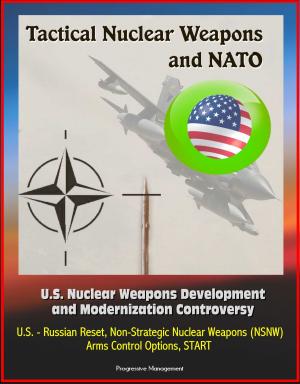Mosquitoes to Wolves: The Evolution of the Airborne Forward Air Controller - T-6, F-4, C-47, A-10, T-28, B-26, A-19, O-1, O-2, OV-10, F-100 Aircraft
Nonfiction, History, Military, Aviation| Author: | Progressive Management | ISBN: | 9781476034942 |
| Publisher: | Progressive Management | Publication: | June 22, 2012 |
| Imprint: | Smashwords Edition | Language: | English |
| Author: | Progressive Management |
| ISBN: | 9781476034942 |
| Publisher: | Progressive Management |
| Publication: | June 22, 2012 |
| Imprint: | Smashwords Edition |
| Language: | English |
Comparable to twentieth century cavalry, early forward air controllers (FAC) probed, observed, and reported enemy activity. Flying rickety, underpowered, and unarmed aircraft, they operated on the leading edge of ground combat. The efficient use of airborne FACs never developed in a meaningful way in World War II, with the possible exception of their use in Marine amphibious operations in the Pacific. But the rugged terrain of Korea and the jungle mazes of Vietnam restricted the capabilities of ground controllers to identify targets, thus expanding the need for "eyes in the air." FAC roles changed from those of probing, observing, and reporting, to those of locating targets, marking them for air strikes, and taking an active role in their destruction. This expanded mission resulted in the inevitable evolution of FAC equipment and responsibilities.
Interservice differences regarding the definition of close air support (CAS) caused controversies which clouded ground-support operations in both Korea and Vietnam. The Navy and the Marines saw CAS as the primary mission for airpower. The Air Force and the Army saw CAS as the last priority, to be employed after air superiority has been gained and maintained, supplies have been interdicted, and the enemy's infrastructure has been damaged.
Contents * PREFACE * 1 EVOLUTION OF CLOSE AIR SUPPORT * World War I * Between the Wars * The American Experience, 1918-42 * World War II * Notes * 2 CLOSE AIR SUPPORT DOCTRINE * Early Navy-Marine Close Air Support * Close Air Support in Korea * Air Force Philosophy in Korea * Navy/Marine Air in Vietnam * Notes * 3 KOREA: FORWARD AIR CONTROLLERS EMERGE * The Fight for Air Superiority * Phase One—Retreat to Pusan * Phase Two—Advance to the Yalu * Phase Three—Second Retreat * Phase Four—Main Line of Resistance Stabilized * Phase Five—Air Pressure for Peace * A Substitute for Artillery * Close Air Support in Korea * The Extemporized Air War * The Need for Airborne FACs * Command and Control Support * 6132d Tactical Air Control Group * 6147th Squadron Organized * Immediate Air Requests * Mosquitoes Assigned to Divisions * Mosquito Mission Expands * The 502d Tactical Control Group * Notes * 4 MOSQUITO OPERATIONS IN KOREA * The Role of the Mosquito * Forward Air Controller Equipment * Visual Reconnaissance * The Tactical Air Control System * Mosquito Mellow * Strike Control Procedures * Problems Encountered * Forward Air Controller Training * Notes * 5 KOREA: THE STAGNANT WAR * The Argument for Interdiction * CAS along a Stabilized Front * Radar-Controlled Air Strikes * Communications Upgrades * T-6 Upgrades * Operation Thunderbolt * Operation Ripper * Communist Losses in the First Year * Strategy Changes * Pathfinder Operations * The Truce Ceremony * 6147th TCG Deactivated * Joint Air-Ground Doctrine * Post Korea * Notes * 6 VIETNAM: THE ADVISORY YEARS
Comparable to twentieth century cavalry, early forward air controllers (FAC) probed, observed, and reported enemy activity. Flying rickety, underpowered, and unarmed aircraft, they operated on the leading edge of ground combat. The efficient use of airborne FACs never developed in a meaningful way in World War II, with the possible exception of their use in Marine amphibious operations in the Pacific. But the rugged terrain of Korea and the jungle mazes of Vietnam restricted the capabilities of ground controllers to identify targets, thus expanding the need for "eyes in the air." FAC roles changed from those of probing, observing, and reporting, to those of locating targets, marking them for air strikes, and taking an active role in their destruction. This expanded mission resulted in the inevitable evolution of FAC equipment and responsibilities.
Interservice differences regarding the definition of close air support (CAS) caused controversies which clouded ground-support operations in both Korea and Vietnam. The Navy and the Marines saw CAS as the primary mission for airpower. The Air Force and the Army saw CAS as the last priority, to be employed after air superiority has been gained and maintained, supplies have been interdicted, and the enemy's infrastructure has been damaged.
Contents * PREFACE * 1 EVOLUTION OF CLOSE AIR SUPPORT * World War I * Between the Wars * The American Experience, 1918-42 * World War II * Notes * 2 CLOSE AIR SUPPORT DOCTRINE * Early Navy-Marine Close Air Support * Close Air Support in Korea * Air Force Philosophy in Korea * Navy/Marine Air in Vietnam * Notes * 3 KOREA: FORWARD AIR CONTROLLERS EMERGE * The Fight for Air Superiority * Phase One—Retreat to Pusan * Phase Two—Advance to the Yalu * Phase Three—Second Retreat * Phase Four—Main Line of Resistance Stabilized * Phase Five—Air Pressure for Peace * A Substitute for Artillery * Close Air Support in Korea * The Extemporized Air War * The Need for Airborne FACs * Command and Control Support * 6132d Tactical Air Control Group * 6147th Squadron Organized * Immediate Air Requests * Mosquitoes Assigned to Divisions * Mosquito Mission Expands * The 502d Tactical Control Group * Notes * 4 MOSQUITO OPERATIONS IN KOREA * The Role of the Mosquito * Forward Air Controller Equipment * Visual Reconnaissance * The Tactical Air Control System * Mosquito Mellow * Strike Control Procedures * Problems Encountered * Forward Air Controller Training * Notes * 5 KOREA: THE STAGNANT WAR * The Argument for Interdiction * CAS along a Stabilized Front * Radar-Controlled Air Strikes * Communications Upgrades * T-6 Upgrades * Operation Thunderbolt * Operation Ripper * Communist Losses in the First Year * Strategy Changes * Pathfinder Operations * The Truce Ceremony * 6147th TCG Deactivated * Joint Air-Ground Doctrine * Post Korea * Notes * 6 VIETNAM: THE ADVISORY YEARS















